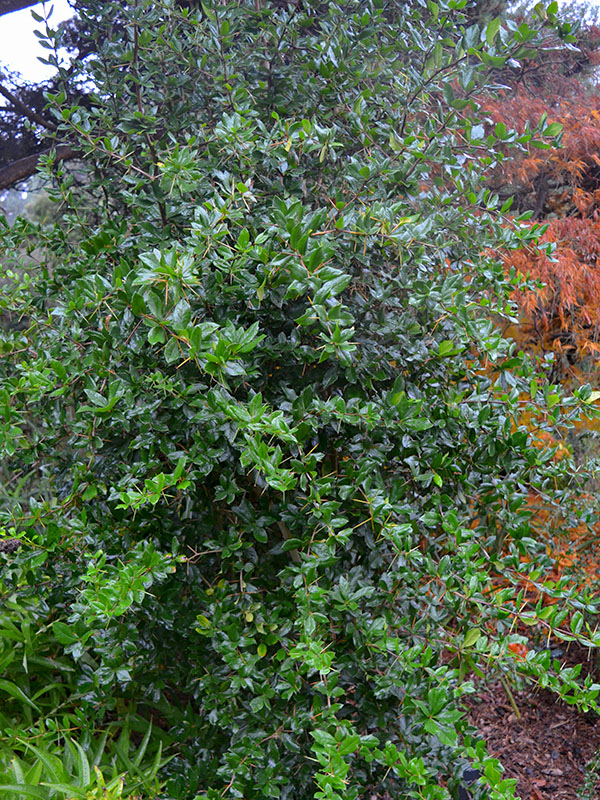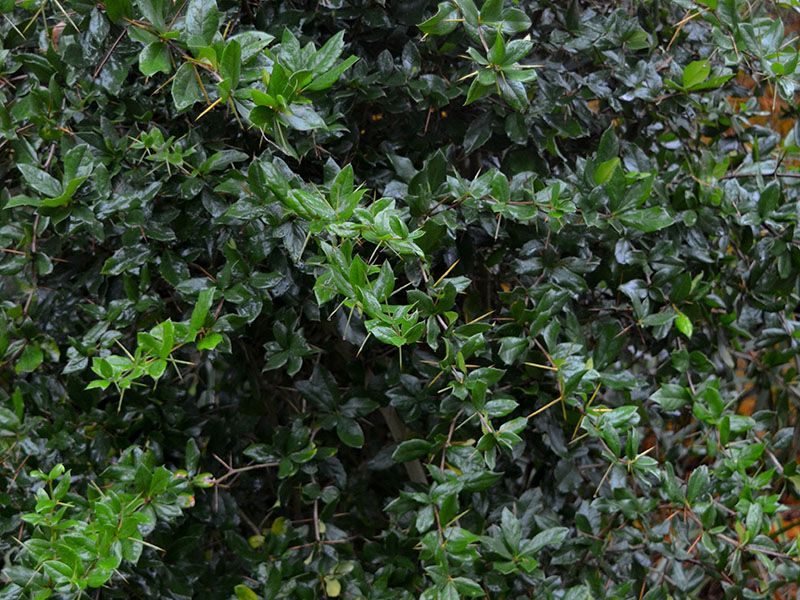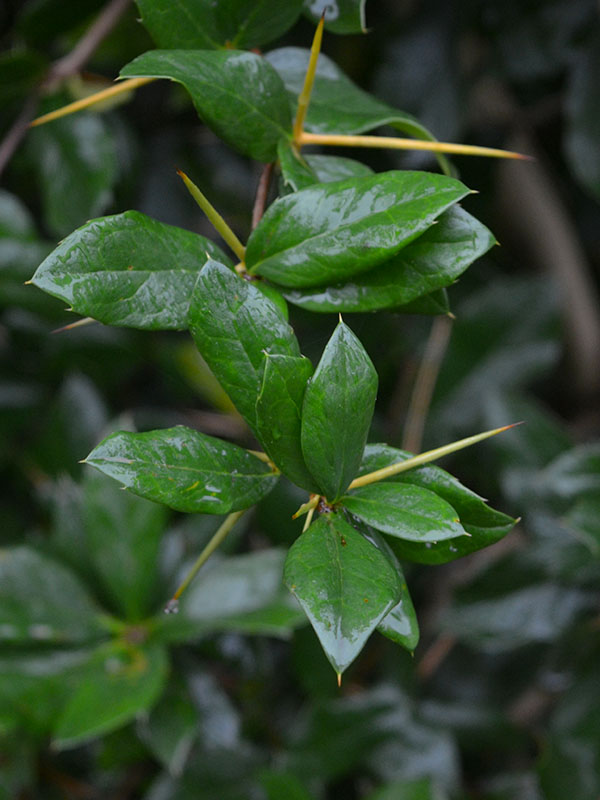
Woody > Berberis > Berberis valdiviana > Berberis valdiviana
Berberis valdiviana
Barberry
Origin: The genus name comes from the Arabic word for fruit, 'berberys'. Native to Valdivia Province, Chile.
| Family |
| Berberidaceae |
| Genus |
| Berberis |
| Species |
| valdiviana |
| Category |
| Woody |
| Type |
| Shrub (evergreen) |
| USDA Hardiness Zone |
| 8b - 9a |
| Canadian Hardiness Zone |
| 8a |
| RHS Hardiness Zone |
| H5 |
| Temperature (°C) |
| 15 to -10 |
| Temperature (°F) |
| 15 - 25 |
| Height |
| Up to 5 m |
Photographs
Description and Growing Information
Flowering Period
| General Description |
| Berberis valdiviana is an upright evergreen shrub. |
| Landscape |
| Works well in gardens and as borders and groundcover. |
| Cultivation |
| Will thrive in any soil type that is not waterlogged, and should be grown in full sun. |
| Growth |
| Medium |
| Pests |
| The bacteria Pseudomonas berberidis may cause black spots on leaves, and the berberry aphid (Liosomaphis berberidis) may also be a problem. |
| Habitat |
| Light woodlands. |
| Bark/Stem Description |
| Stems are grey-yellow, glabrous and covered with spines marked with parallel grooves. |
| Leaf Description |
| Elliptic in shape, rigid with a leathery texture, up to 5 ? 3 cm, glabrous, margins are even and smooth. The top surface is dark green, bottoms are yellow-green and covered by small fleshy projections (papilla). |
| Flower Description |
| Burnt orange, up to 20 in a pendulous cluster up to 5 cm. Bloom time is late spring. |
| Fruit Description |
| Globose, mauve-black, glaucous blue, up to 6 mm in diameter. |
| Notable Specimens |
| RHS Garden Rosemoor, North Devon, England. Wakehurst Place, Ardingly, Haywards Heath, Sussex, England. |
| Propagation |
| Propagate by seed (although offspring may be variable), or by cuttings. |



